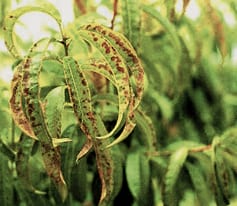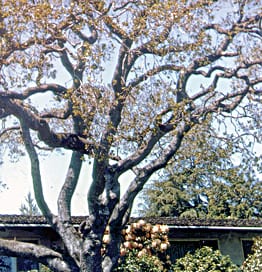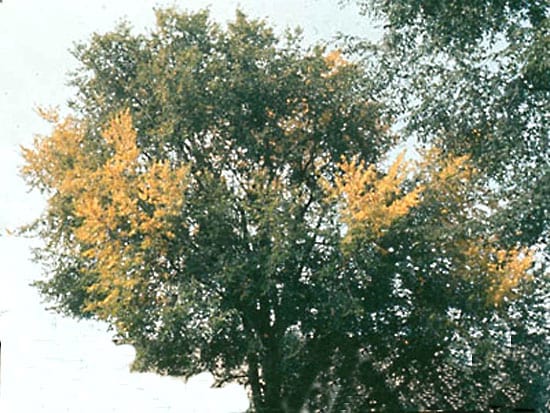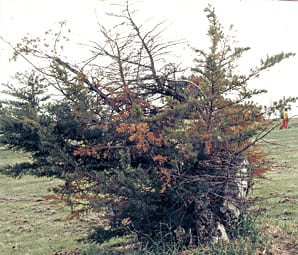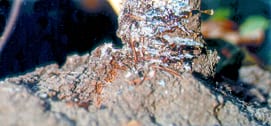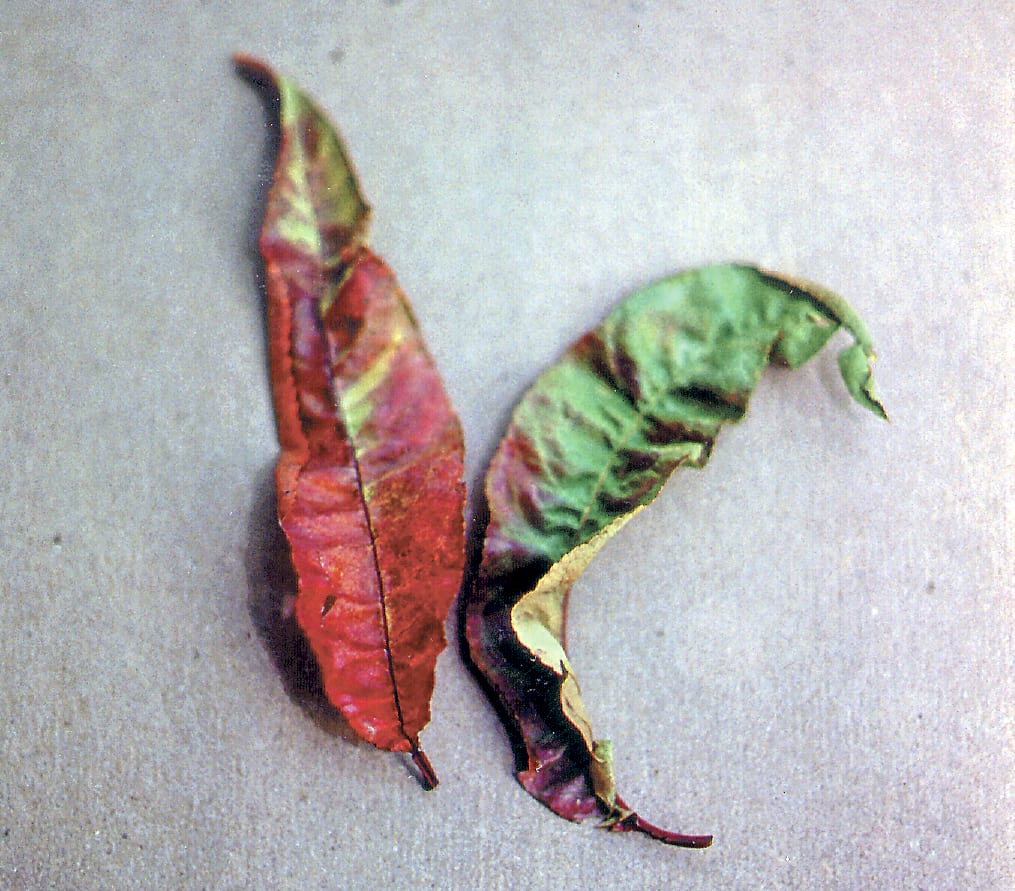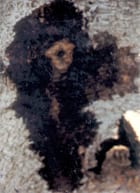Caused by a Phytoplasma, formerly called mycoplasma.
Peach trees are affected throughout North America.
X-disease phytoplasma can be transmitted by several species of leafhoppers. These leafhoppers typically acquire the X-disease pathogen while sucking juices from the leaves of X-disease-infected peaches or chokecherries. Wild chokecherry is an important reservoir for the X-disease phytoplasma. Two to three weeks later, feeding leafhoppers may inject the agent into healthy leaves while feeding. These leafhoppers are usually not considered pests of peach and cherry. The main damage they cause is the incidental transmission of the X-disease, phytoplasma.
Symptoms in peach are apparent after about two months of growth. Leaves on isolated branches curl inward and develop irregular yellow to reddish-purple spots which later drop out, leaving leaves tattered with a “shothole” appearance. Leaves on affected branches fall prematurely, starting at the base of the branch, until only a tuft of leaves remains at the tips of infected shoots. Fruit drops prematurely. Two to three years after initial infection, progressive death of scaffold branches occurs and eventually death of the entire tree follows.
Phytoplasma moves thru sieve cells in the phloem causing death of the inner bark. Progressive root loss results in chlorosis, stunting, decline and death. Leafhoppers carrying phytoplasma transmit the pathogen while feeding on host trees.


